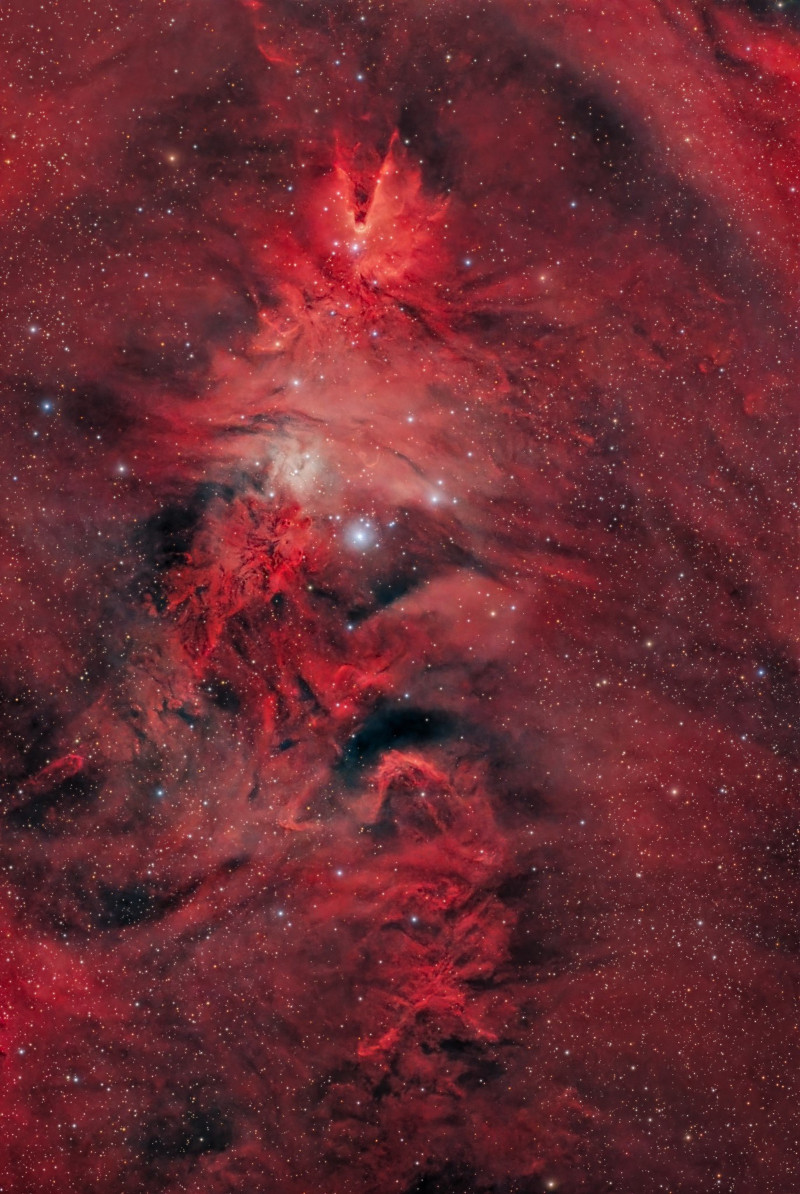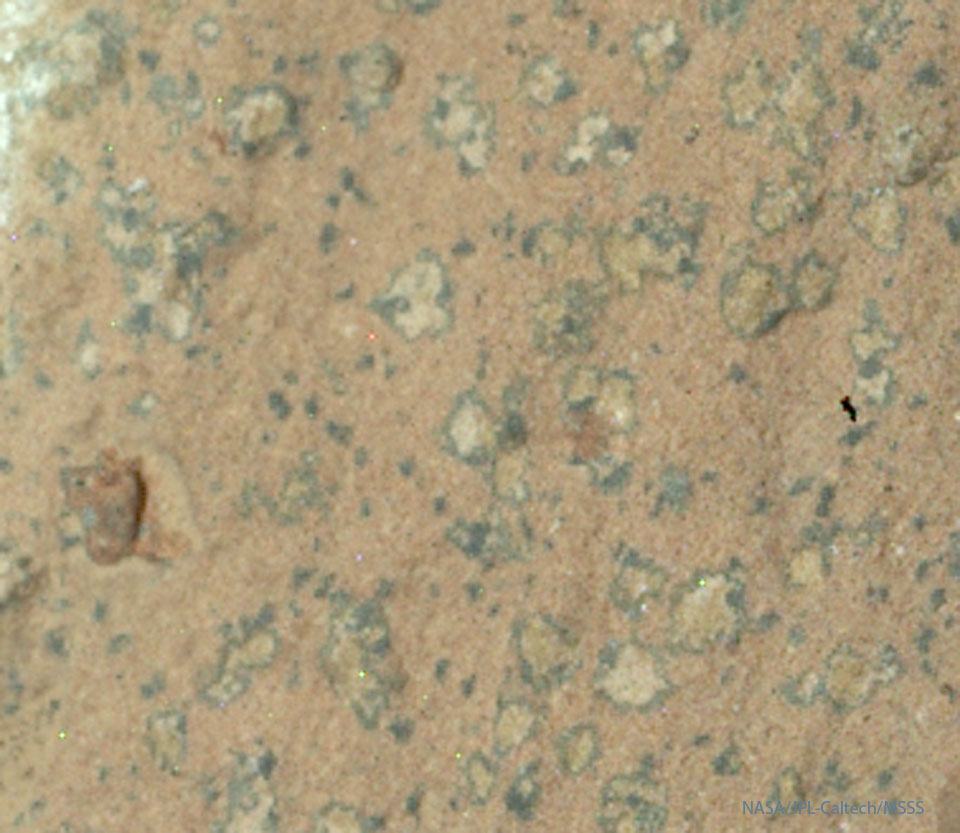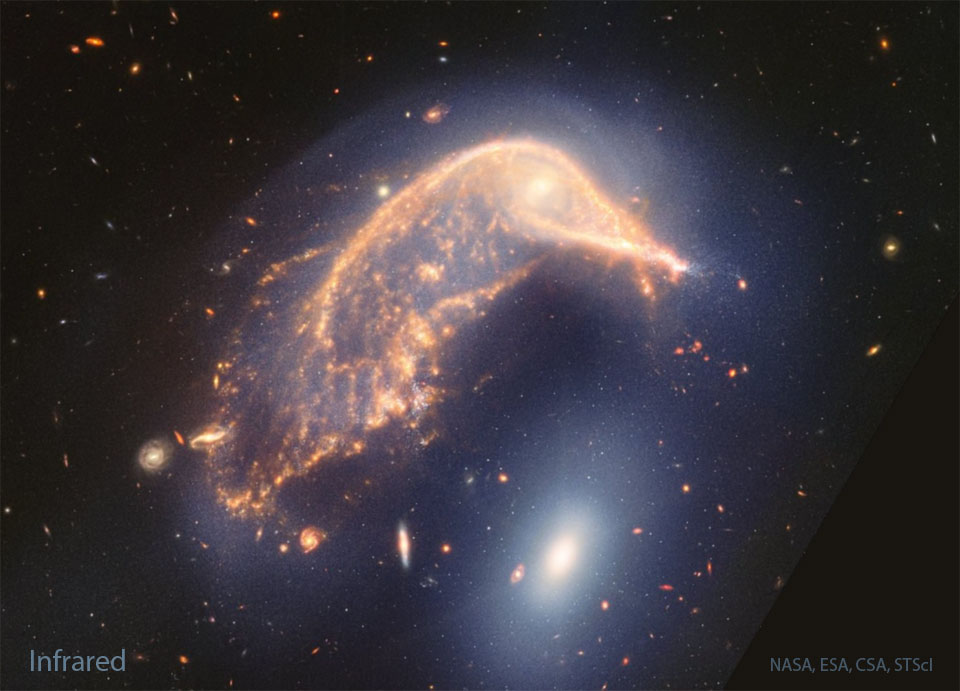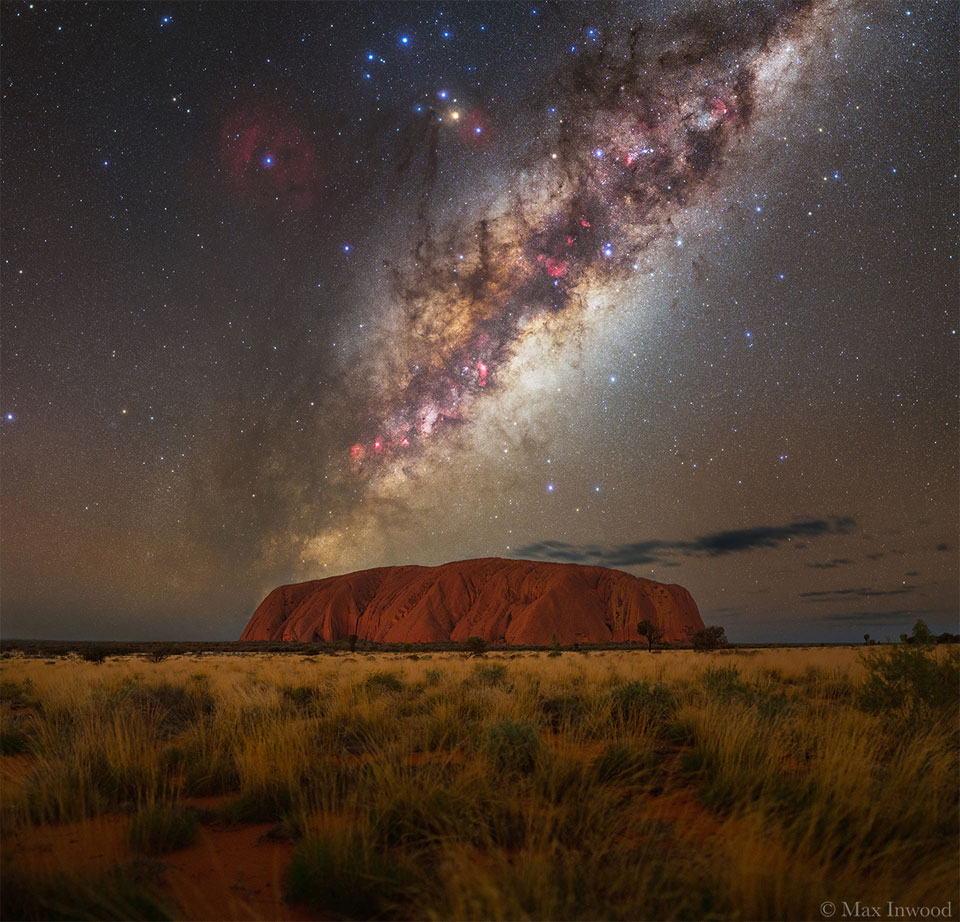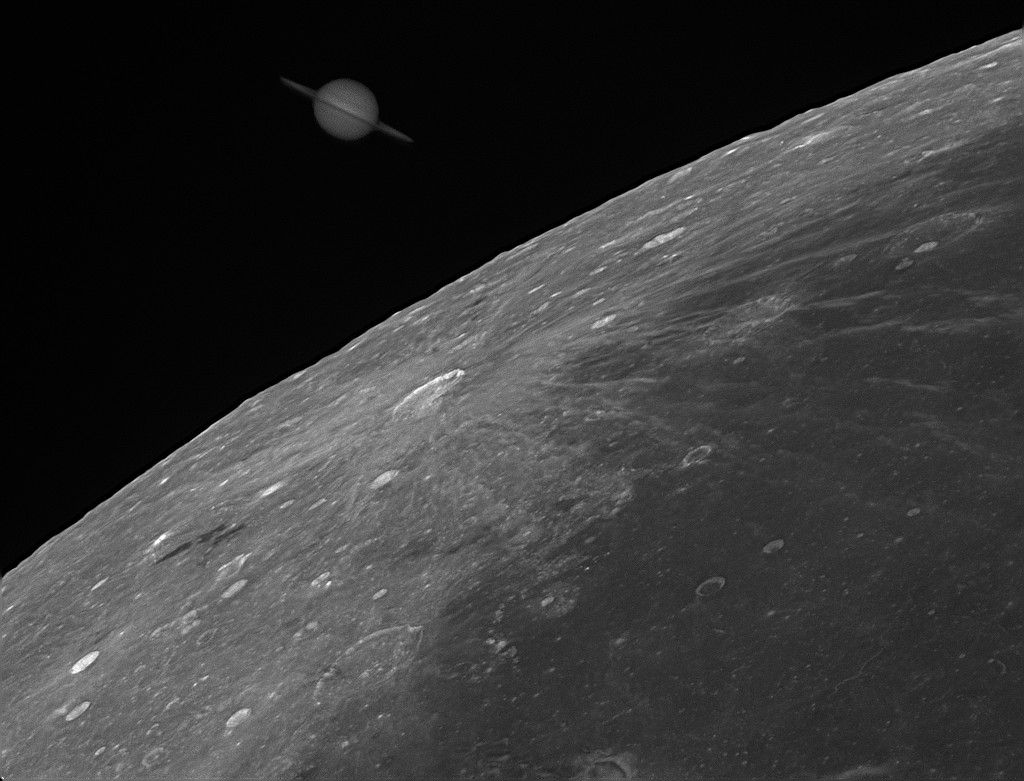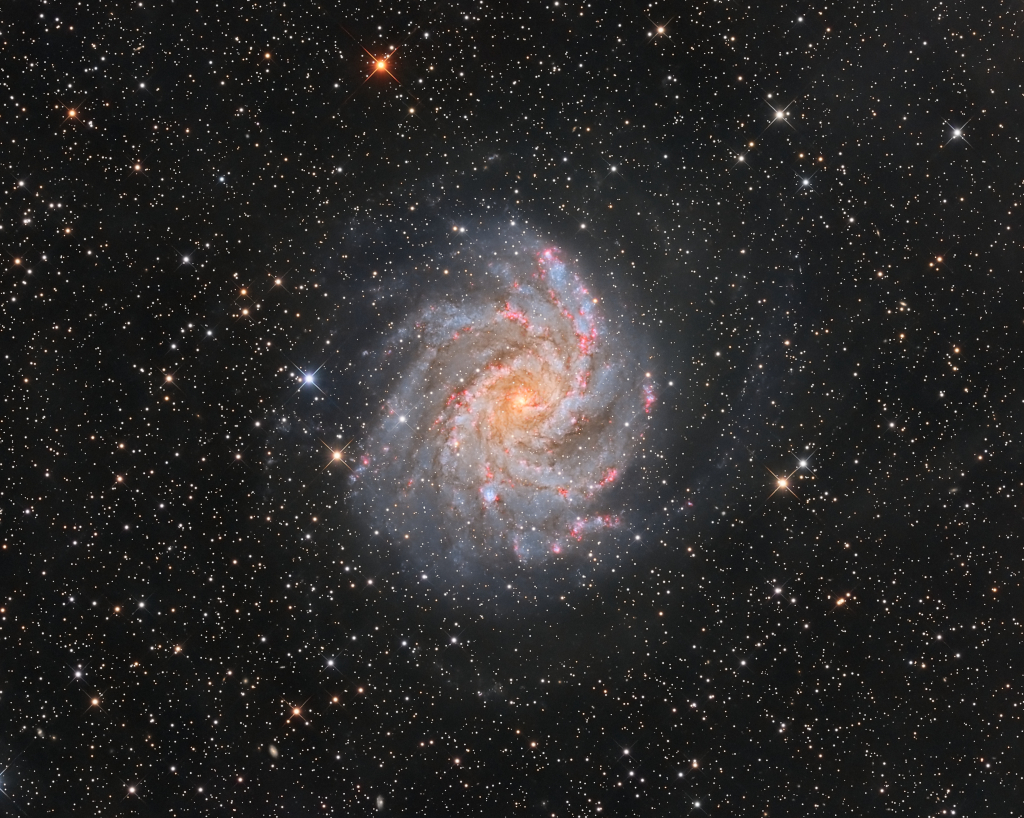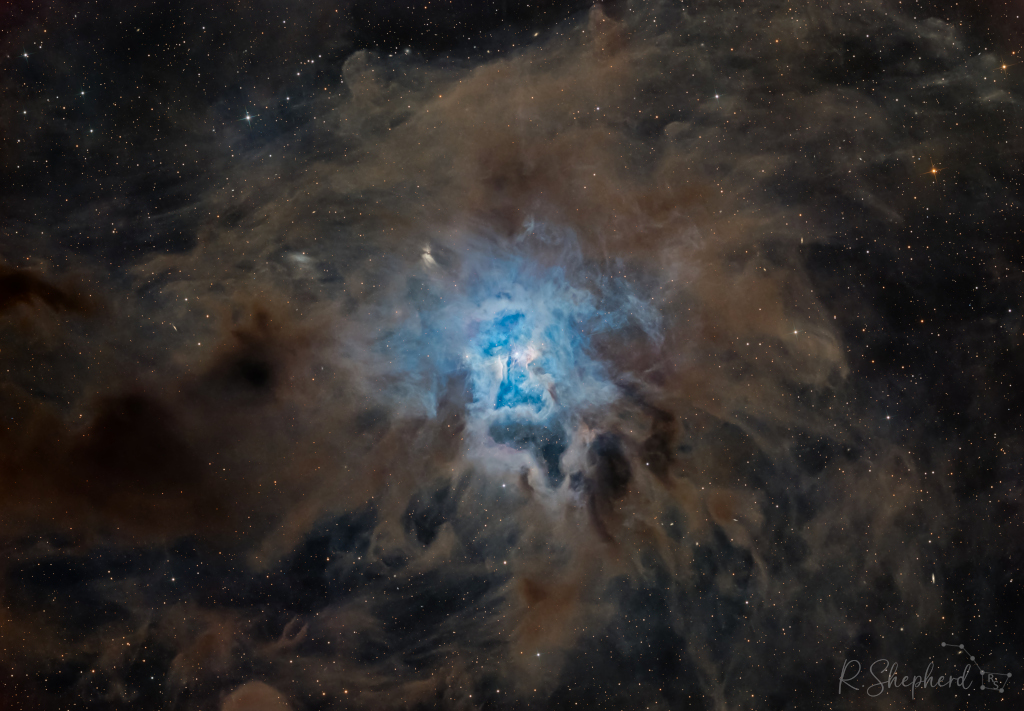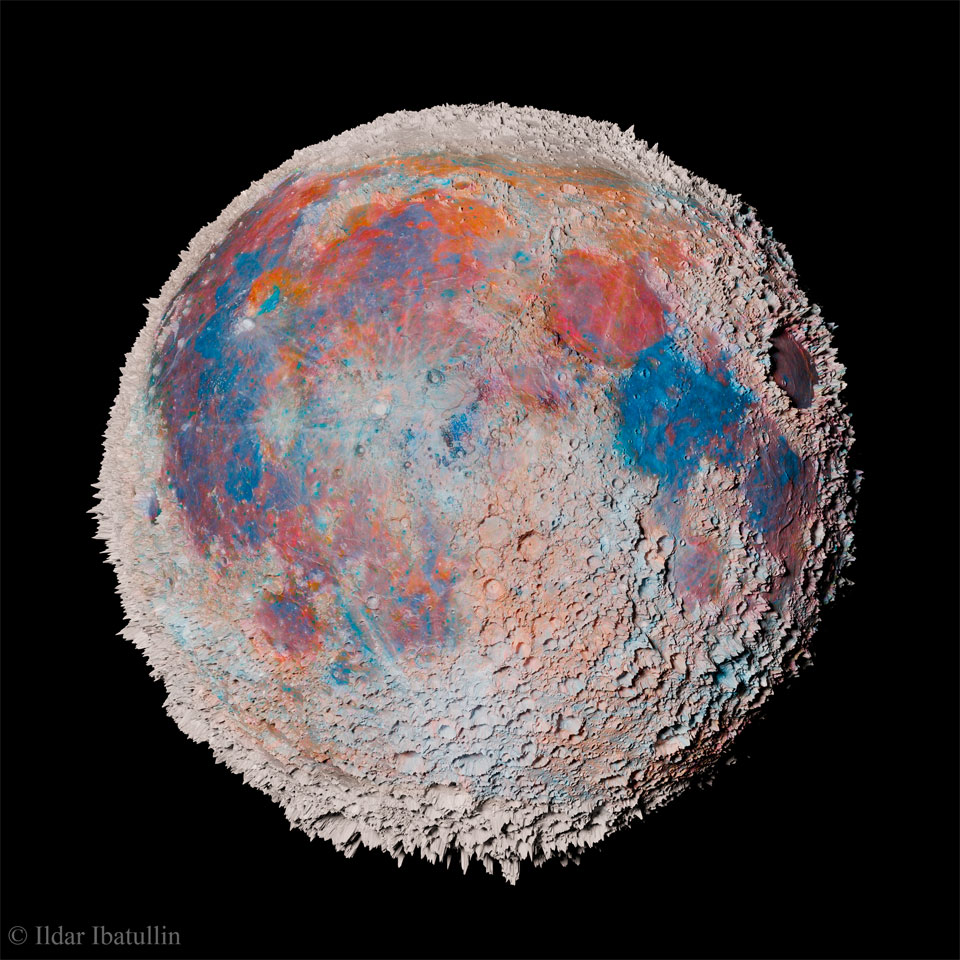Η Αστρονομική Εικόνα της Ημέρας από τη NASA
Unicorn, Fox Fur and Christmas Tree
25/12/2025
A star forming region cataloged as NGC 2264, this beautiful but complex arrangement of interstellar gas and dust is about 2,700 light-years distant in the faint but fanciful constellation Monoceros, the Unicorn. Seen toward the celestial equator and near the plane of our Milky Way galaxy, the seasonal skyscape mixes reddish emission nebulae excited by energetic light from newborn stars with dark interstellar dust clouds. Where the otherwise obscuring dust clouds lie close to the hot, young stars, they also reflect starlight, forming blue reflection nebulae. In fact, bright variable star S Monocerotis is immersed in a blue-tinted haze near center. Arrayed with a simple triangular outline above S Monocerotis, the stars of NGC 2264 are popularly known as the Christmas Tree star cluster. Carved by energetic starlight, the Cone Nebula sits upside down at the apex of this cosmic Christmas tree while the dusty, convoluted pelt of glowing gas and dust under the tree is called the Fox Fur Nebula. This rich telescopic frame spans about 1.5 degrees or 3 full moons on the sky top to bottom, covering nearly 80 light-years at the distance of NGC 2264.
Copyright: Michael Kalika
Προηγούμενες Αστρονομικές Εικόνες της Ημέρας από τη NASA
Comet Olbers over Kunetice Castle
01/08/2024
A visitor to the inner solar system every 70 years or so Comet 13P/Olbers reached its most recent perihelion, or closest approach to the Sun, on June 30 2024. Now on a return voyage to the distant Oort cloud the Halley-type comet is recorded here sweeping through northern summer night skies over historic Kunetice Castle, Czech Republic. Along with a broad dust tail, and brighter coma, this comet's long ion tail buffeted by storms and winds from the Sun, is revealed in the composite of tracked exposures for comet and sky, and fixed exposures for foreground landscape recorded on July 28. The comet is about 16 light-minutes beyond the castle and seen against faint background stars below the northern constellation Ursa Major. The hilltop castle dates to the 15th century, while Heinrich Olbers discovered the comet in 1815. Captured here low in northwestern skies just after sunset Comet Olbers, for now, offers skywatchers on planet Earth rewarding telescopic and binocular views. Comet 13P/Olbers next perihelion passage will be in 2094.
Copyright: Petr Horálek
Leopard Spots on Martian Rocks
31/07/2024
What is creating these unusual spots? Light-colored spots on Martian rocks, each surrounded by a dark border, were discovered earlier this month by NASA's Perseverance Rover currently exploring Mars. Dubbed leopard spots because of their seemingly similarity to markings on famous Earth-bound predators, these curious patterns are being studied with the possibility they were created by ancient Martian life. The pictured spots measure only millimeters across and were discovered on a larger rock named Cheyava Falls. The exciting but unproven speculation is that long ago, microbes generated energy with chemical reactions that turned rock from red to white while leaving a dark ring, like some similarly appearing spots on Earth rocks. Although other non-biological explanations may ultimately prevail, speculation focusing on this potential biological origin is causing much intrigue. New Mirror: APOD is now available from Brazil in Portuguese
Copyright: NASA
Arp 142: Interacting Galaxies from Webb
30/07/2024
To some, it looks like a penguin. But to people who study the universe, it is an interesting example of two big galaxies interacting. Just a few hundred million years ago, the upper NGC 2936 was likely a normal spiral galaxy: spinning, creating stars, and minding its own business. Then it got too close to the massive elliptical galaxy NGC 2937, below, and took a dive. Together known as Arp 142, they are featured in this new Webb infrared image, while a visible light Hubble image appears in comparison. NGC 2936 is not only being deflected, but distorted, by this close gravitational interaction. When massive galaxies pass near each other, gas is typically condensed from which new stars form. A young group of stars appears as the nose of the penguin toward the right of the upper galaxy, while in the center of the spiral, bright stars together appear as an eye. Before a billion years, the two galaxies will likely merge into one larger galaxy. Explore Your Universe: Random APOD Generator
Copyright: NASA
Milky Way over Uluru
29/07/2024
What's happening above Uluru? A United Nations World Heritage Site, Uluru is an extraordinary 350-meter high mountain in central Australia that rises sharply from nearly flat surroundings. Composed of sandstone, Uluru has slowly formed over the past 300 million years as softer rock eroded away. The Uluru region has been a home to humans for over 22,000 years. Recorded last month, the starry sky above Uluru includes the central band of our Milky Way galaxy, complete with complex dark filaments of dust, bright red emission nebulas, and billions of stars.
Copyright: Max Inwood
Saturn at the Moon's Edge
27/07/2024
Saturn now rises before midnight in planet Earth's sky. On July 24, the naked-eye planet was in close conjunction, close on the sky, to a waning gibbous Moon. But from some locations on planet Earth the ringed gas giant was occulted, disappearing behind the Moon for about an hour from skies over parts of Asia and Africa. Because the Moon and bright planets wander through the sky near the ecliptic plane, such occultation events are not uncommon, but they can be dramatic. In this telescopic view from Nanjing, Jiangsu, China, Saturn is caught moments before its disappearance behind the lunar disk. The snapshot gives the illusion that Saturn hangs just above Glushko crater, a 43 kilometer diameter, young, ray crater near the Moon's western edge. Of course, the Moon is 400 thousand kilometers away, compared to Saturn's distance of 1.4 billion kilometers.
Copyright: Chengcheng Xu
Facing NGC 6946
26/07/2024
From our vantage point in the Milky Way Galaxy, we see NGC 6946 face-on. The big, beautiful spiral galaxy is located just 20 million light-years away, behind a veil of foreground dust and stars in the high and far-off constellation Cepheus. In this sharp telescopic portrait, from the core outward the galaxy's colors change from the yellowish light of old stars in the center to young blue star clusters and reddish star forming regions along the loose, fragmented spiral arms. NGC 6946 is also bright in infrared light and rich in gas and dust, exhibiting a high star birth and death rate. In fact, since the early 20th century ten confirmed supernovae, the death explosions of massive stars, were discovered in NGC 6946. Nearly 40,000 light-years across, NGC 6946 is also known as the Fireworks Galaxy.
Copyright: Roberto Marinoni
NGC 7023: The Iris Nebula
25/07/2024
These cosmic clouds have blossomed 1,300 light-years away in the fertile starfields of the constellation Cepheus. Called the Iris Nebula, NGC 7023 is not the only nebula to evoke the imagery of flowers. Still, this deep telescopic image shows off the Iris Nebula's range of colors and symmetries embedded in surrounding fields of interstellar dust. Within the Iris itself, dusty nebular material surrounds a hot, young star. The dominant color of the brighter reflection nebula is blue, characteristic of dust grains reflecting starlight. Central filaments of the reflection nebula glow with a faint reddish photoluminescence as some dust grains effectively convert the star's invisible ultraviolet radiation to visible red light. Infrared observations indicate that this nebula contains complex carbon molecules known as PAHs. The dusty blue petals of the Iris Nebula span about six light-years.
Copyright: Robert Shepherd
Exaggerated Moon
24/07/2024
Our Moon doesn't really have craters this big. Earth's Moon, Luna, also doesn't naturally show this spikey texture, and its colors are more subtle. But this digital creation is based on reality. The featured image is a digital composite of a good Moon image and surface height data taken from NASA's Lunar Orbiter Laser Altimeter (LOLA) mission -- and then exaggerated for educational understanding. The digital enhancements, for example, accentuate lunar highlands and show more clearly craters that illustrate the tremendous bombardment our Moon has been through during its 4.6-billion-year history. The dark areas, called maria, have fewer craters and were once seas of molten lava. Additionally, the image colors, although based on the moon's real composition, are changed and exaggerated. Here, a blue hue indicates a region that is iron rich, while orange indicates a slight excess of aluminum. Although the Moon has shown the same side to the Earth for billions of years, modern technology is allowing humanity to learn much more about it -- and how it affects the Earth.
Copyright: NASA
Η Αστρονομική Εικόνα της Ημέρας από τη NASA (NASA Astronomy Picture of the Day) είναι μια δωρεάν υπηρεσία που παρέχει καθημερινά μια εντυπωσιακή εικόνα από το σύμπαν, την λήψη της οποίας έχει πραγματοποιήσει κάποιος από τους αστρονόμους της NASA ή από κάποιον από τους δορυφόρους ή τα τηλεσκόπια που η NASA λειτουργεί. Οι εικόνες που εμφανίζονται καλύπτουν μια ευρεία γκάμα από θέματα, συμπεριλαμβανομένων των αστερισμών, των γαλαξιών, των πλανητικών συστημάτων, των κομητών, των αστρικών σωμάτων και των παρατηρητηρίων. Κάθε εικόνα συνοδεύεται από μια σύντομη εξήγηση και πληροφορίες σχετικά με το τι παρατηρείται στην εικόνα.
